In the spring, workers from the fine-art handling firm Artex positioned the first permanent artwork in the McMullen Museum’s future home at 2101 Commonwealth Avenue, on Brighton Campus. Mounting the 127-year-old stained-glass triptych by American artist John La Farge (1835–1910) took nearly four hours, with each panel weighing approximately 150 pounds. The Museum will open in its new quarters in September.
Photographs by Gary Wayne Gilbert for Boston College Magazine.
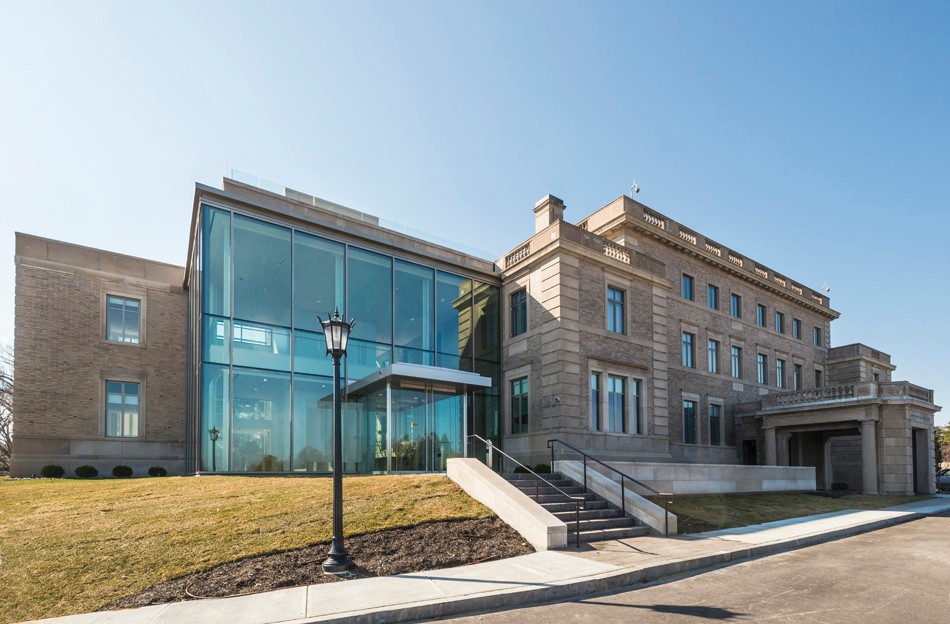
The McMullen Museum will be located on land previously owned by the Boston archdiocese, in the former Cardinal’s residence, a 23,000-square-foot Roman Renaissance Revival structure built in 1927. Beginning in 2014, the architecture firm DiMella Shaffer Associates reconfigured the existing space and designed a three-story, 7,000-square-foot glass addition. The addition’s third story is obscured by a rooftop terrace in this image of the front, which faces away from Commonwealth Avenue toward the campus.
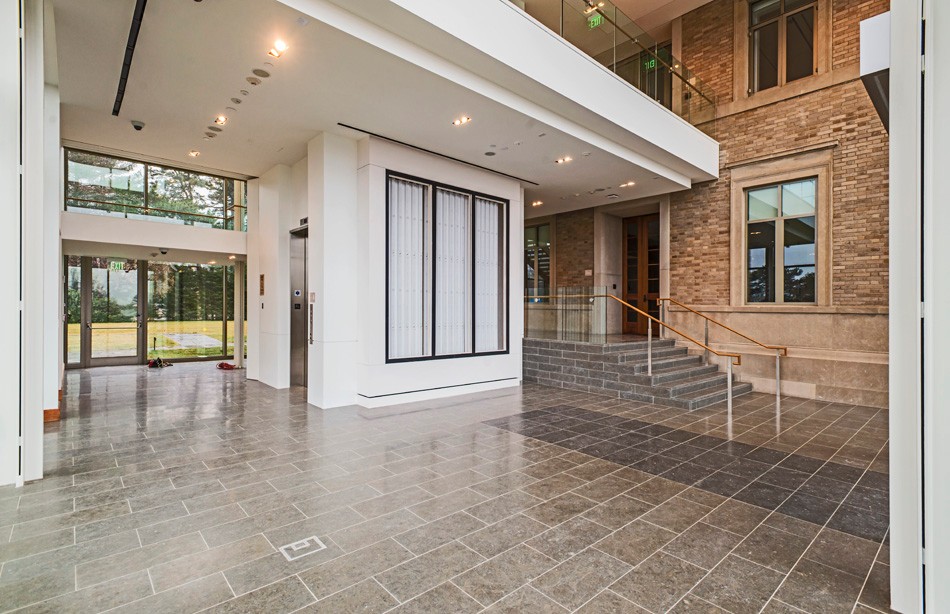
The exhibition space, situated on the second and third floors of the original building, will be nearly double that of the museum’s current Devlin Hall location. The first floor will serve as a conference center, reached via the doorway at right. The triptych will be inserted in the wall at center.
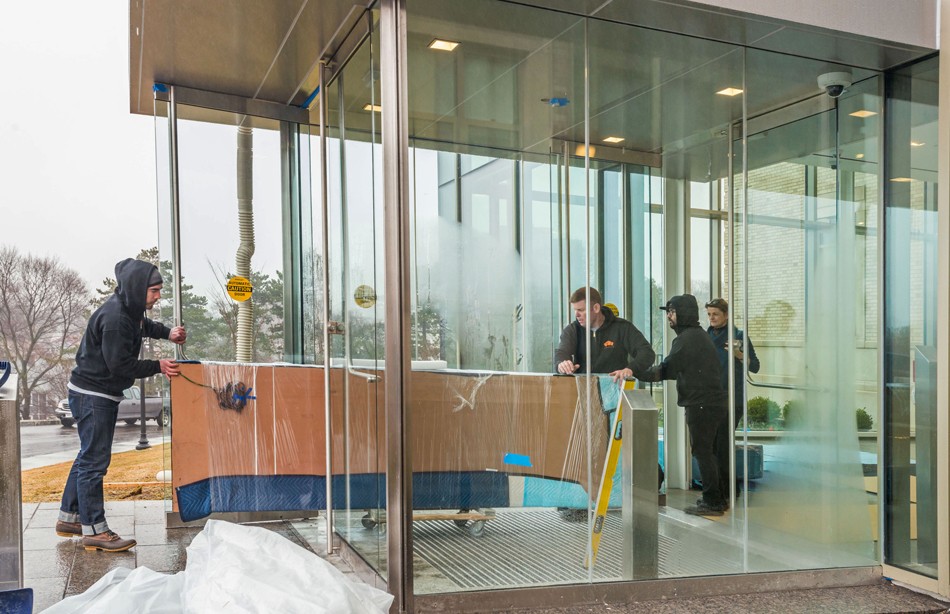
The crew from Artex rolls in the first of the roughly one-inch-thick panels, boxed and bundled in blankets and shrink wrap to prevent buckling. The triptych was a gift of William Vareika ’74, P’09, ’15, and his wife, Alison, P’09, ’15.
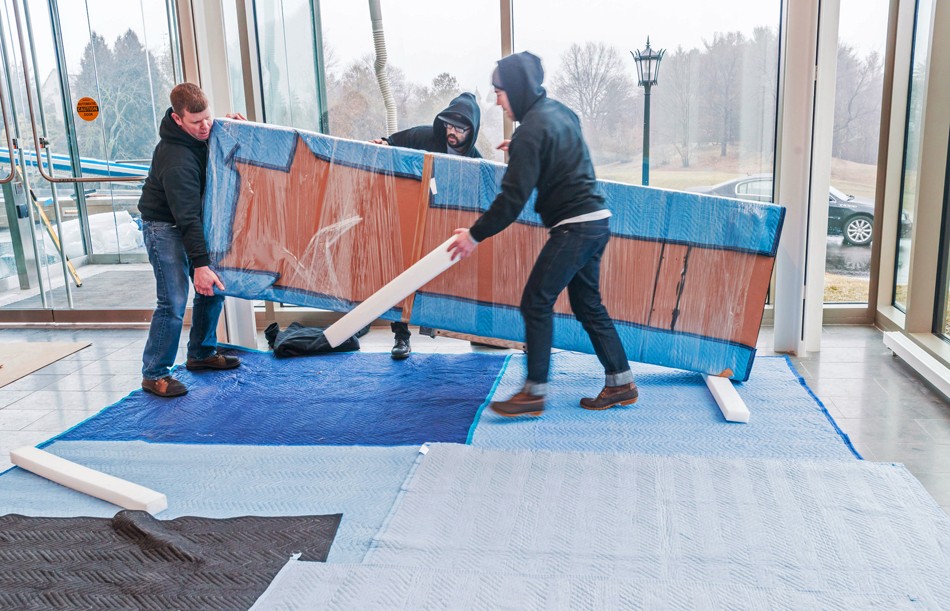
Through the atrium’s glass can be seen a portion of the University’s 43-acre Brighton property.
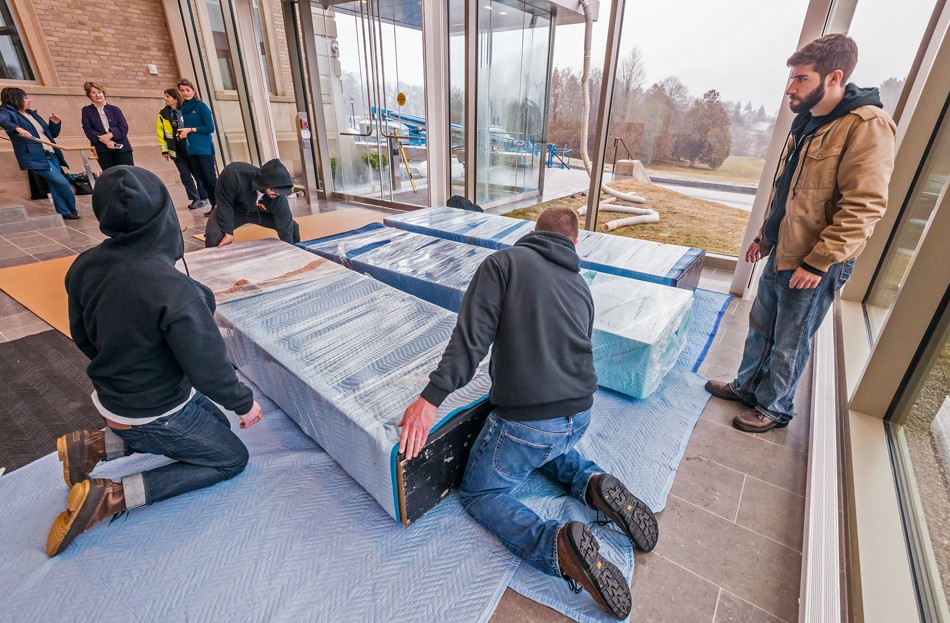
Assistant museum director Diana Larsen (background, at right) looks on as the crew prepares to remove the first 99 x 31-inch La Farge panel from its box.
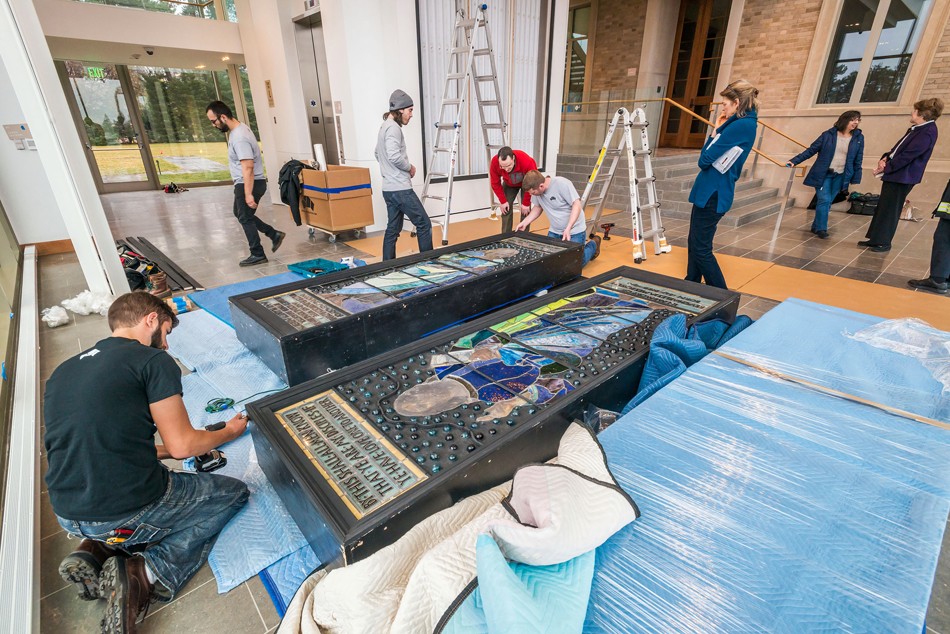
The triptych, which La Farge created for Roxbury’s All Saints Unitarian Church, features a preaching Christ (center), St. John the Evangelist (alongside), and St. Paul (under wraps). The nuggets of glass—more than a hundred embedded in each window—are called cabochons. The artist called them his “broken jewels.”
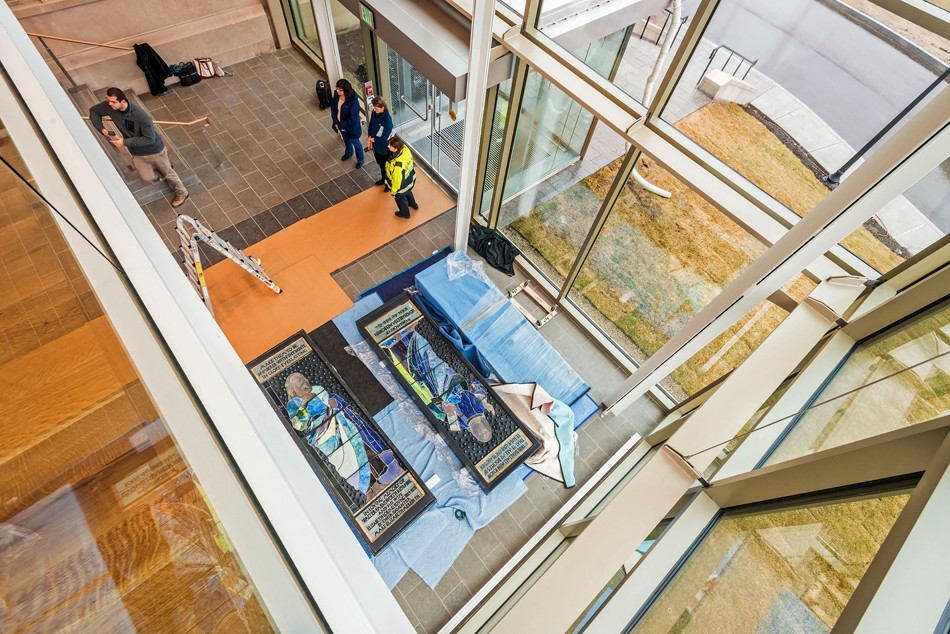
The view from the second-floor balcony. The three panels underwent 15 months of restoration in 2013–15.
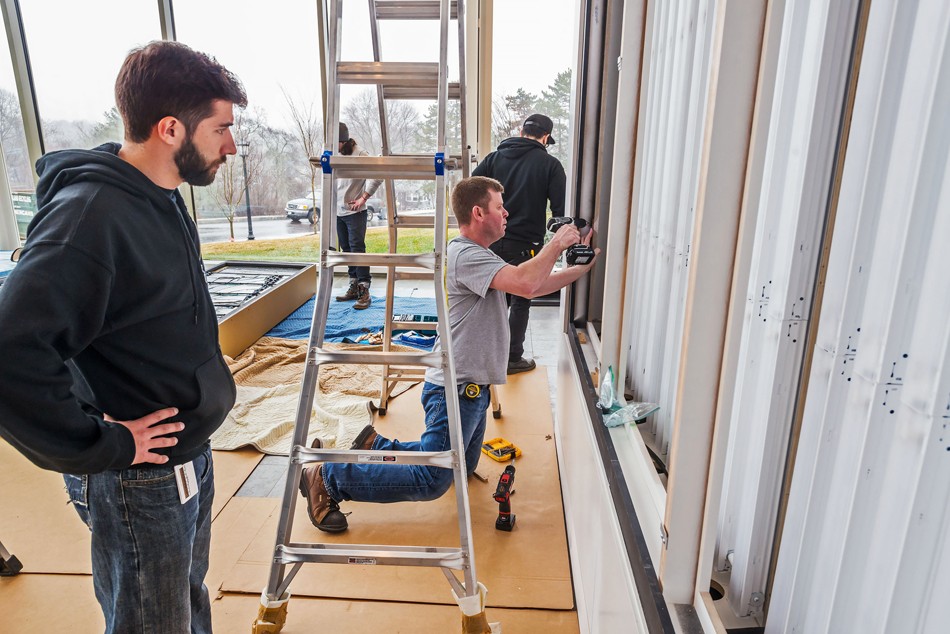
Readying the frame for the first panel. The white verticle bars contain LED lights that will illuminate the windows from behind.
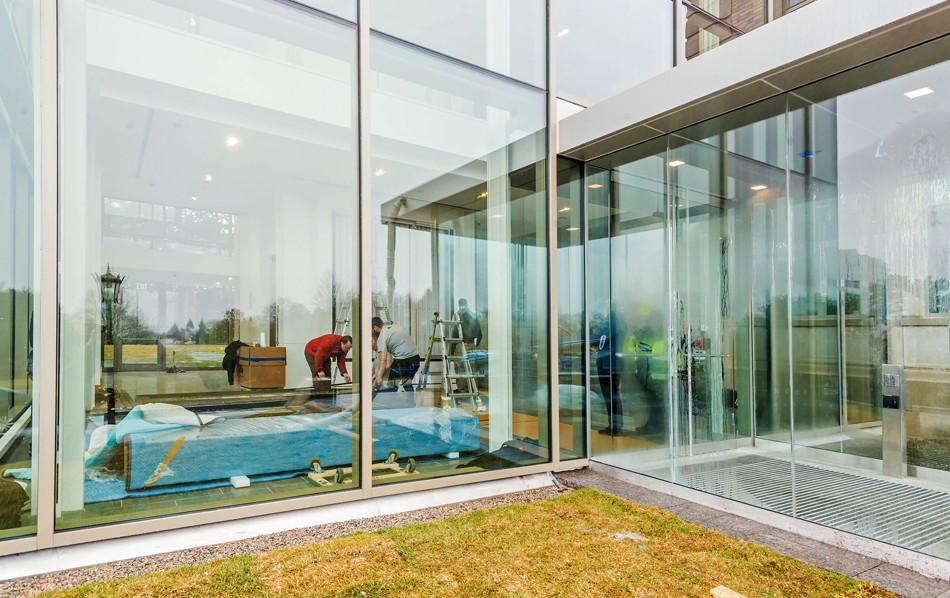
View from outside, with the main entrance at right.
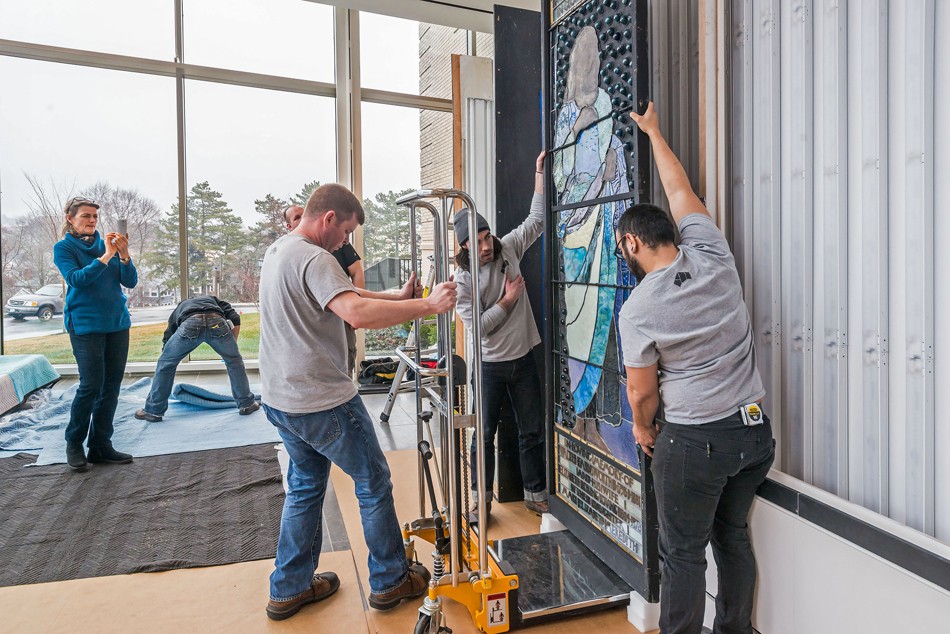
The crew will position the St. John panel using a lift truck. The saint’s face, hands, and feet are oil paintings on glass. The clothing and background are opalescent glass, a mixture of opaque and translucent glass with a milky, striated effect that La Farge pioneered.
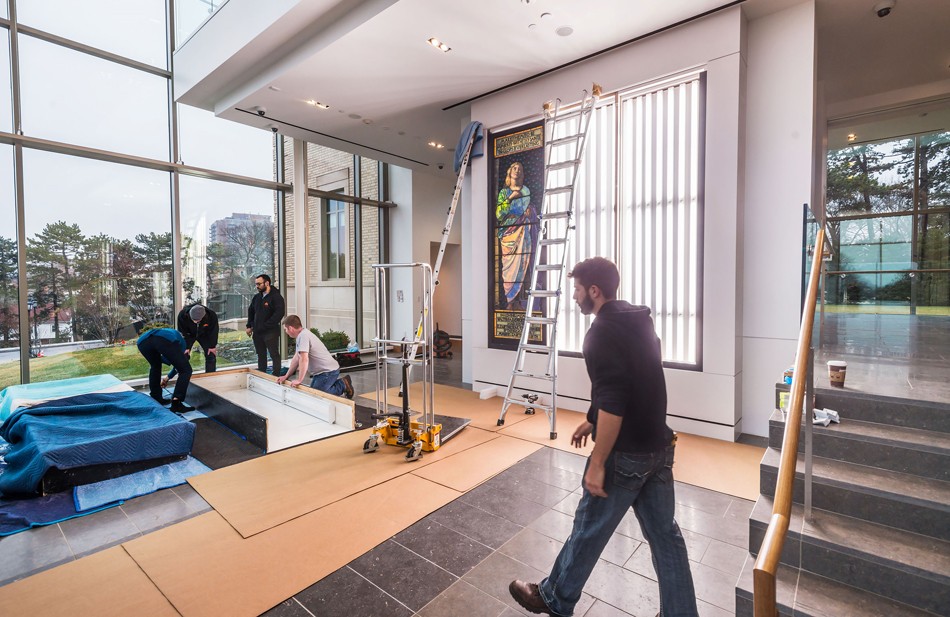
The back lights will illuminate the triptych 24 hours a day, 365 days a year, once the museum opens.
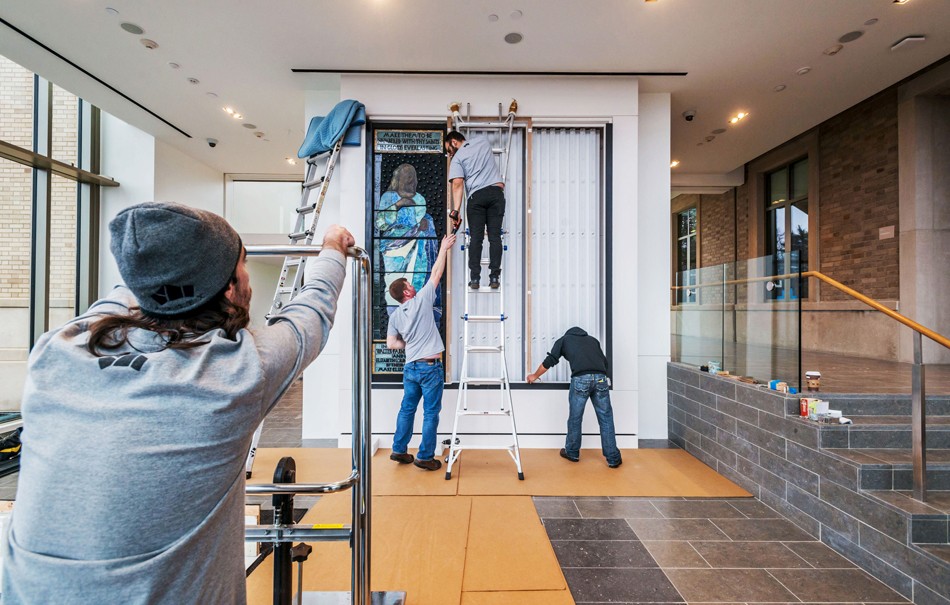
The crew assembles the frame for the middle panel.
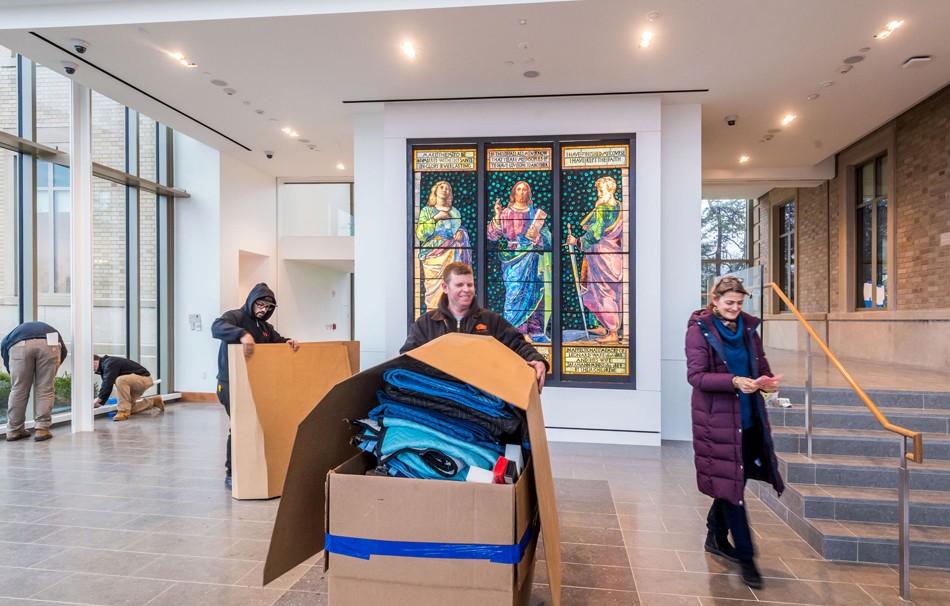
The installation was completed in just under four hours.
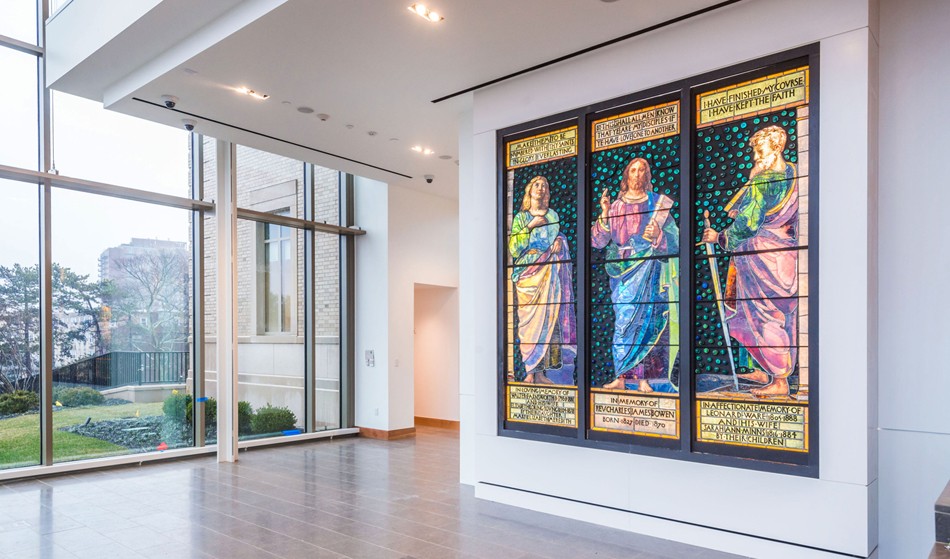
The museum, which will remain free to all visitors, will open in September with "Beyond Words: Illuminated Manuscripts from Boston Area Collections," an exhibition that will have concurrent venues at Harvard’s Houghton Library and the Isabella Stewart Gardner Museum.




